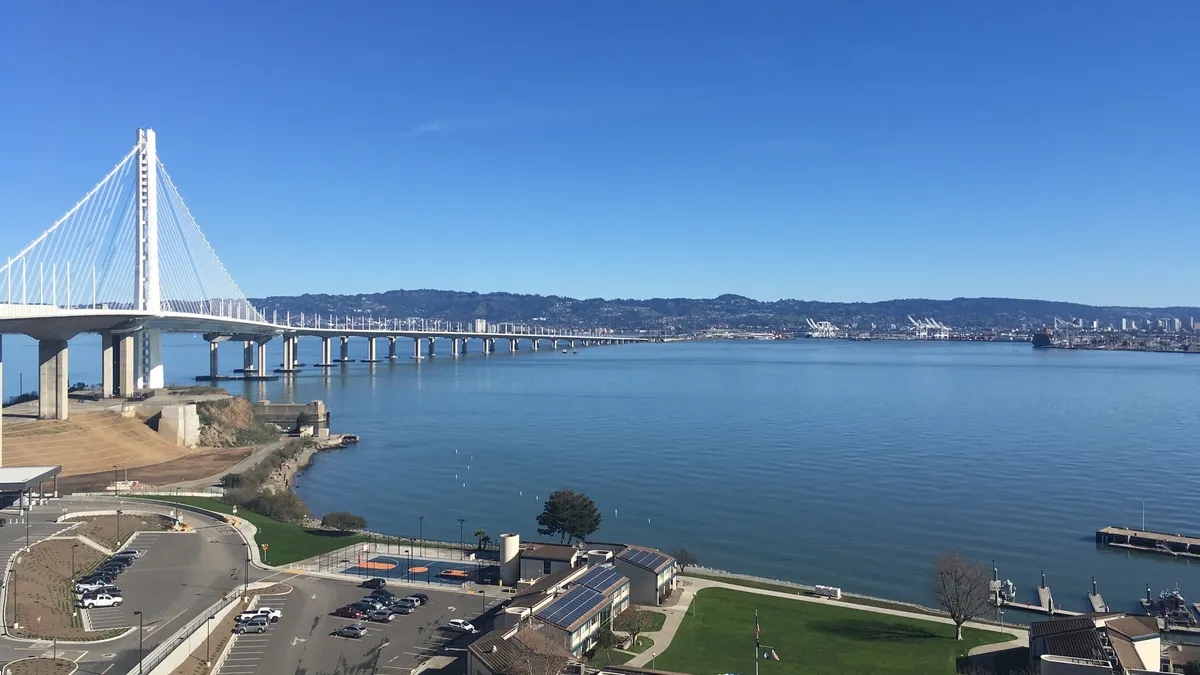Dive Brief:
- Former and current residents of Treasure Island, a neighborhood in the city of San Francisco that sits in San Francisco Bay, are suing several local and California state agencies, private companies, developers, U.S. Navy officials and others for $2 billion claiming that the island has levels of radioactive waste higher than previously disclosed, that the Navy and those tasked with cleanup did not do an adequate job and that they and others knew or should have known how dangerous it was to live there.
- There are 47 plaintiffs as part of the class action and currently almost a dozen defendants, including housing developers Lennar and FivePoint Holdings LLC, and engineering firm Tetra Tech EC.
- Built in the 1930s, the manmade Treasure Island served as a U.S. Navy facility for more than half a century before it was turned over to the city of San Francisco in 1997.
Dive Insight:
In addition to the $2 billion plus legal fees, the plaintiffs are asking the court to require that the defendants remediate the property to an acceptable condition; conduct safety and health assessments for those living, working or attending school on the island; and stop any development, construction, digging or any other activity that could disturb the soil until independent verification of a complete cleanup can be provided.
The allegations against the defendants in the case vary but include making false and misleading statements about the cleanup process and negligence as the plaintiffs were exposed to carcinogens and now suffer from a fear that they will develop cancer. Residents and former residents in the lawsuit claim that toxic waste and its effects still linger on the island.
Since 1997, Treasure Island has been used to provide homes for the city's homeless and those who need both housing and other services through the use of former military barracks. When developers, including Lennar Homes, get into full swing with construction on the $6 billion project, the plan is to evict many current residents to make way for new buildings.
Demolition and infrastructure work has been underway since 2016, and developers also had to increase the island's resilience against earthquakes and a rise in sea level because the island was found to be sinking, Business Insider reported. Construction will move forward until the court decides otherwise. The court also could order the thorough remediation of the property, adding to the $6 billion price tag.
If and when the development is complete, the new Treasure Island will include more than 8,000 residences, 500 hotel rooms, upscale shopping, office space, 300 acres of parks and green space and a ferry terminal. Most homes will be priced at market rate, although 27% of the housing stock has been earmarked for affordable housing. Based on a rendering of the project, most if not all of the housing will be condominium buildings or other multifamily configurations. Some of the island's current low-income residents will be relocated to the new buildings.
As a former military facility, Treasure Island was used by the U.S. Navy primarily as a personnel-processing center, but also had activities, typical of military bases of that era, involving petroleum, solvents, paints and other materials that were required to be cleaned up to standards overseen by the California Department of Toxic Substances Control and the California Environmental Protection Agency.
Multiple regulatory agencies have concluded that there is no risk to human health and safety on the island, according to the Treasure Island website, including the U.S. Navy, the California Department of Toxic Substances Control and the California Department of Public Health. The Navy also has evaluated Treasure Island for radiological contamination and found that "it is consistent with background levels throughout the Bay Area," the website states.
Encompassing 290 acres of open space and 22 miles of trails, the Treasure Island development plan was awarded LEED for Neighborhood Development Platinum in 2016.














